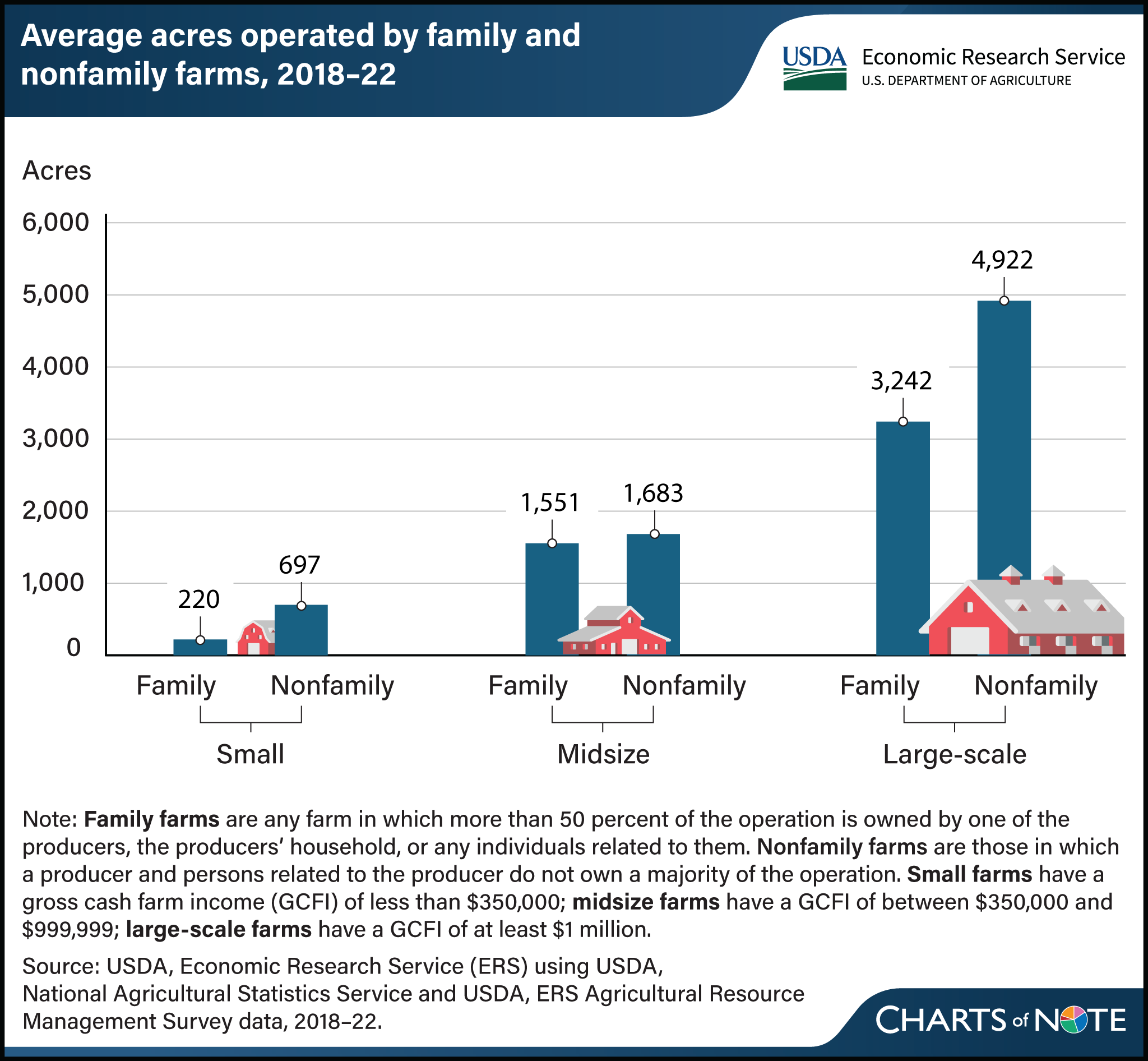Family farms operated fewer acres on average than their small and large-scale nonfamily farm counterparts, 2018-2022
- by Katherine Lacy and Katherine Lim
- 7/10/2025

Family farms operated fewer acres on average than their small and large-scale nonfamily farm counterparts, according to data for 2018 to 2022. Nonfamily farms are those farms in which the majority of the operation is not owned by one of the producers, their household, or any individuals related to them, and they represented 2 percent of total U.S. farms between 2018 and 2022 and accounted for 13.4 percent of the value of production. Small farms—those with gross cash farm income (GCFI) of less than $350,000—showed a notable difference in the average acres operated between nonfamily farms (697 acres on average), and family farms (220 acres on average). Large-scale (GCFI of $1 million or more) nonfamily farms operated an average of 4,922 acres compared to 3,242 acres for large-scale family farms. Midsize farms had similar average acreages for both family and nonfamily farms. The larger acreages for small and large-scale nonfamily farms contribute to the larger share of the value of production produced by nonfamily farms relative to their share of number of farms. This chart is drawn from data in the USDA, Economic Research Service’s report Nonfamily Farm Operations and the Households That Operate Them published in March 2025.
We’d welcome your feedback!
Would you be willing to answer a few quick questions about your experience?

